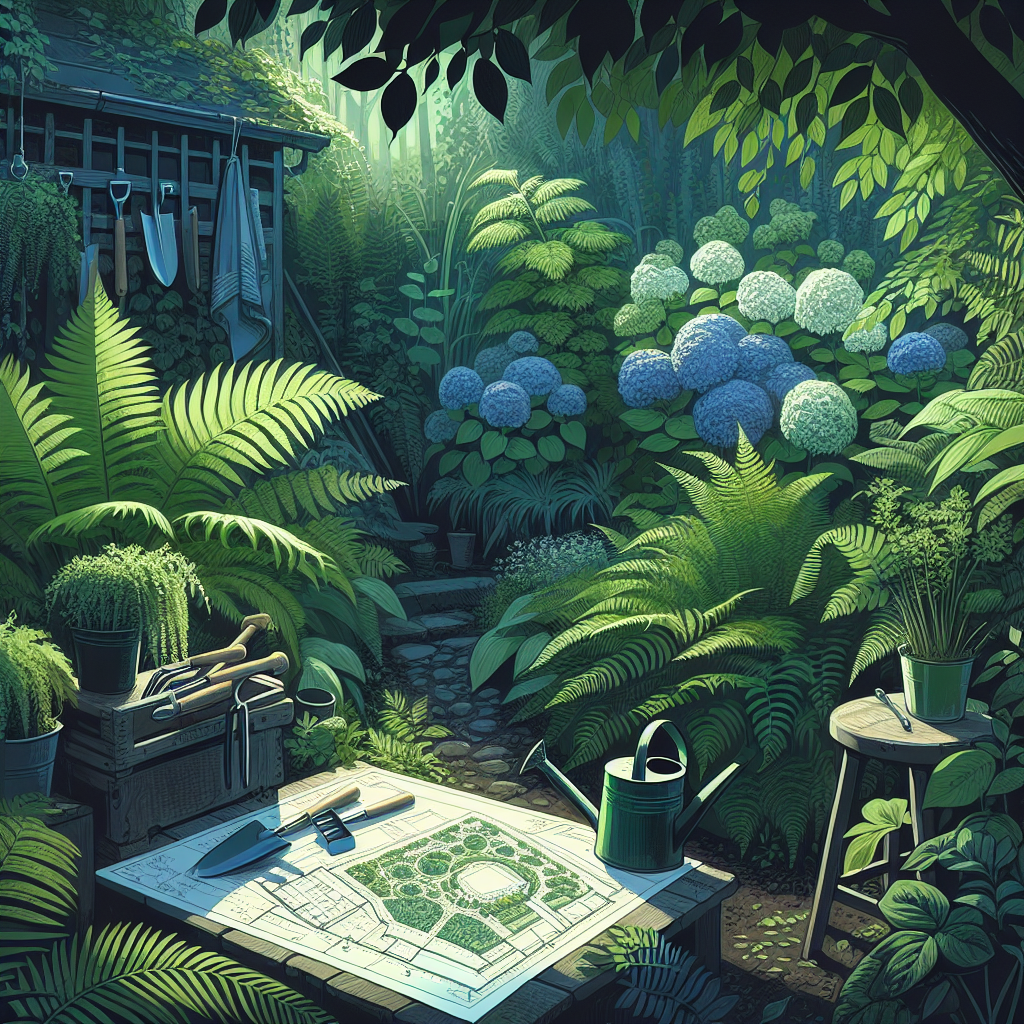Planning a Garden in Shady Areas
Creating a flourishing garden in the shady areas of your backyard doesn’t have to be a daunting task! With the right knowledge and a bit of creativity, you can transform these spaces into lush, vibrant corners of tranquility. In this post, we will dive into the key elements of planning a garden in shady areas, ensuring that even the most dimly lit corners of your outdoor space are put to good use.
Understanding Shade in Your Garden
First and foremost, it’s critical to understand the type of shade you have. There is dappled shade, partial shade, and full shade – each one has its own set of challenges and suitable plant species. “The Spruce” offers a comprehensive guide to understanding shade types and the plants that thrive in each condition.
Choosing the Right Plants
Now, let’s talk vegetation. Not all plants are sun-seekers; in fact, some prefer the solace of the shadows. Hostas, ferns, and astilbes are excellent starts for a shade garden. The Missouri Botanical Garden provides an extensive list of plants that are well-suited for shady areas, complete with guidance on their care requirements.
Soil Preparation is Key
Before planting, ensure the soil is ready. Shaded areas often struggle with compaction and moisture, so adding organic matter can improve drainage and breathability. Some plants may also require specific pH levels or additional nutrients, so it’s important to test the soil. Resources like the Royal Horticultural Society can provide insight into soil preparation for shady gardens.
Lighting Up Your Shade Garden
While you can’t change the position of the sun, you can certainly manipulate light to your advantage. Use bright, light-colored mulch to reflect sunlight upwards. You can also introduce garden mirrors strategically to catch and redistribute light – though it’s important to do this carefully to avoid harming wildlife or plants.
The Magic of Water Features
Adding a water feature can brighten a shadowy garden spot as well as provide a soothing atmosphere. The glint of water captures whatever light is available and also encourages wildlife. Companies like Aquascape Inc. offer a range of products that suit different garden sizes and styles.
Creating Depth with Height and Texture
Incorporate various heights and textures to add depth to your shady garden. Tall plants like Solomon’s Seal or Japanese Maple in combination with low creepers or ground cover like sweet woodruff can create an engaging composition.
Hardy Companions: Perennials for the Long Term
Focusing on perennials means your garden will continue to grow and flourish year after year. Bleeding hearts and hellebores are classic choices that not only survive but thrive in shaded conditions.
Annuals: The Yearly Blossom Boost
For an annual bloom boost in the shadows, consider impatiens or begonias. While they won’t return each year without re-planting, they can provide a seasonal spectacle that’s truly delightful.
Don’t Forget the Hardscape
Elements like stepping stones, benches, and statuary can enhance the mystique of a shade garden. They’re not only functional but also contribute structure and style, creating focal points and destinations within your garden.
Timing is Everything
While spring and early summer are great times for planting most flowers and shrubs, fall can be ideal for shade plants. This allows them to establish themselves during the cooler, wetter months. Check with local nurseries for the best times to plant specific species in your region.
Maintenance and Care
Shade gardens can be lower maintenance than sunny ones, but they still need care. Regularly trim overhanging branches to control the level of shade, and be mindful of debris that accumulates, which can smother plants and breed disease.
Bringing Wildlife into the Fold
A shaded garden can be a haven for wildlife. Shade-loving plants often provide the dense cover and food sources that many species of birds and insects seek. National Wildlife Federation’s Garden for Wildlife program offers guidance on how to create wildlife-friendly environments in shaded areas.
Conclusion
A shade garden presents a unique opportunity to create a serene and beautiful plant haven that contrasts the sun-soaked areas of your yard. By carefully selecting suitable plants, preparing your soil, and integrating design elements that enhance the limited light, you can establish a thriving shady nook that invites relaxation and admiration.
Remember that every garden is a work in progress, so take your time to enjoy the journey of cultivating your shade garden. With each planting, you’ll learn more about what works and adapt your strategy to the unique voice of your space.
Transforming a shady backyard area into a blooming garden is just a few steps away. With careful planning, a touch of creativity, and the right resources, your shaded sanctuary will grow into an outdoor retreat for years to come. Happy gardening!

